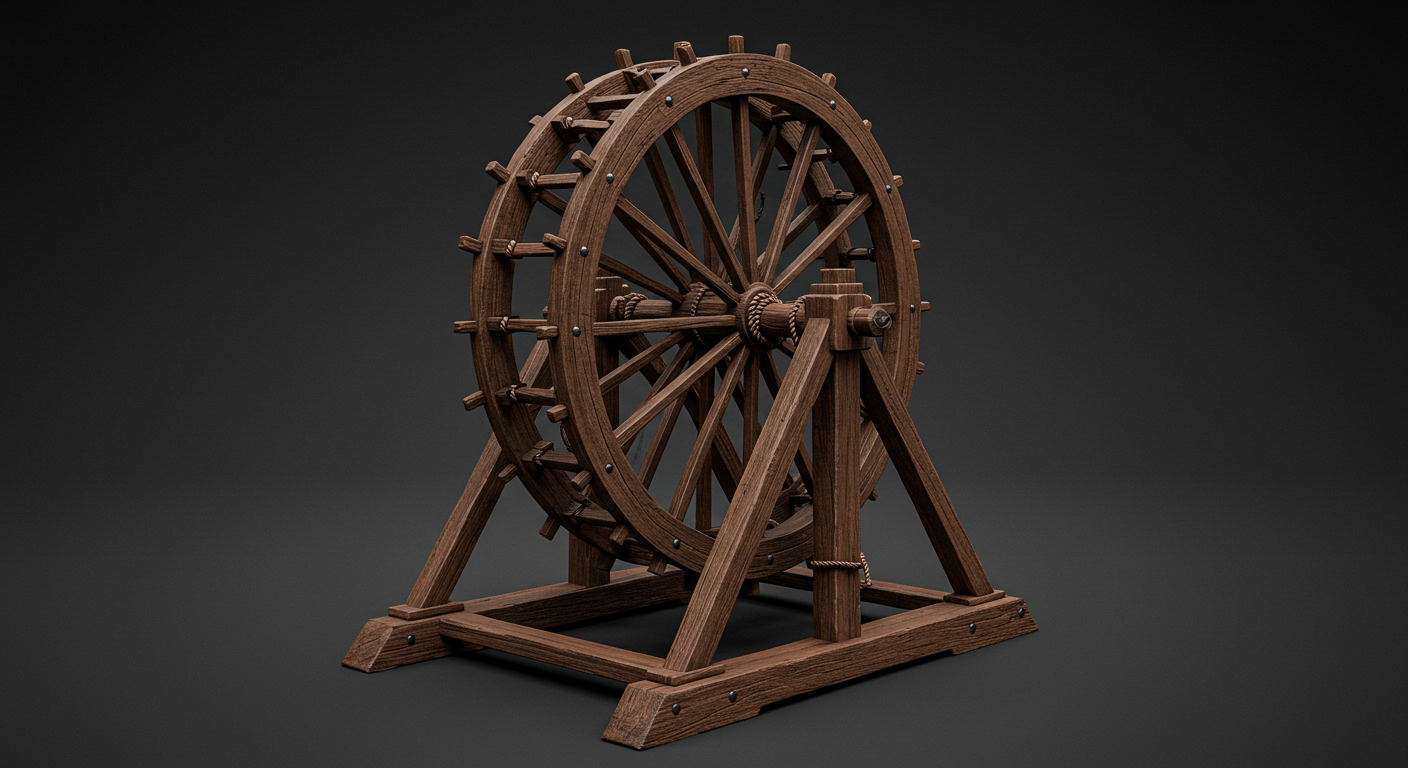The Breaking Wheel, also known as the Catherine Wheel, was one of the most horrifying middle ages torture techniques used for public punishment and execution. This method, designed to inflict prolonged pain and suffering, became infamous across medieval Europe as a symbol of ruthless justice.
The Origins of the Breaking Wheel
The torture wheel has a long and gruesome history, dating back to ancient times. It was widely employed during the medieval ages torture period as a method of extreme punishment for severe crimes. Criminals and outlaws faced this brutal fate as a means of deterring others from committing similar offenses.
A closer look at the mechanics and impact of this device can be explored at the Medieval Torture Museum in Chicago, where visitors can witness replicas of historical torture instruments.
How Did Execution by Wheel Work?
The execution by wheel involved tying the condemned person to a large wooden wheel, often with their limbs extended. The executioner would then strike their bones with an iron bar, breaking them one by one. In some cases, the criminal would be woven through the spokes of the wheel, ensuring maximum exposure and humiliation. This form of execution in medieval times was both a method of punishment and a public spectacle, reinforcing the power of the law.
The Symbolism and Fear of the Wheel Punishment
The wheel punishment was not just a method of execution in the middle ages, but also a means to instill fear. Those sentenced to this form of punishment were often left to die slowly, sometimes surviving for hours or even days. The gruesome nature of this death was meant to serve as a stark warning to others.
For those seeking unique things to do in St Augustine, a visit to the Medieval Torture Museum in St Augustine offers an opportunity to explore this and other horrific medieval devices up close.
The Catherine Wheel: A Device of Infamy
The Catherine Wheel torture device was notorious for its ability to prolong death while ensuring public spectacle. The condemned person’s body, shattered by the blows of the executioner, was sometimes displayed on the wheel for days as a grim reminder of justice. This device was particularly favored in cases of treason, where the punishment needed to reflect the severity of the crime.
To see how such historical punishments were carried out and displayed, visitors can explore exhibits at the Medieval Torture Museum in LA, which features detailed recreations of medieval torture methods.
The Role of the Executioner and Public Perception
The executioner played a significant role in medieval justice, often seen as both a feared and necessary figure. Their skill in delivering a swift or prolonged punishment determined how much suffering the condemned would endure. In many societies, executioners were both ostracized and respected for their grim duties.
For more insights into the history and application of medieval torture methods, the museum’s blog delves into the dark realities of historical justice.
The Breaking Wheel’s Place in History
Over time, the use of the Breaking Wheel declined as societies moved toward less gruesome forms of justice. However, its legacy remains a chilling reminder of the brutal methods employed during the execution in the middle ages.
For history enthusiasts looking for the best museums in St Augustine, visiting a medieval torture museum provides a fascinating look into these historical punishments and the devices used to carry them out.
The Breaking Wheel remains one of the most infamous and gruesome torture devices in history, serving as both a punishment and a tool of fear. Whether through its application as the Catherine Wheel torture device or other medieval ages torture methods, its impact on history is undeniable.
For those fascinated by the darker aspects of history, a visit to the Medieval Torture Museum in Chicago, LA, or St Augustine offers a unique experience, bringing the past to life through interactive exhibits and immersive storytelling.






